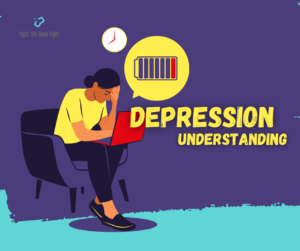In the digital age, pornography has become more accessible than ever before, and its consumption has increased significantly. While pornography itself is a personal choice and can be viewed in moderation without negative consequences, excessive or compulsive consumption of pornographic material has been associated with various sexual health issues. In this article, we will explore the potential link between watching pornography and the development of hypersexuality.
Understanding Hypersexuality
Hypersexuality, also known as compulsive sexual behavior or sexual addiction, is a condition characterized by an excessive preoccupation with sexual thoughts, fantasies, and behaviors. Individuals with hypersexuality often engage in compulsive sexual activities, experience difficulty controlling their sexual urges, and may prioritize sexual behavior over other aspects of their lives. While hypersexuality can have multiple causes, including biological, psychological, and environmental factors, research suggests that the consumption of pornography can contribute to the development and exacerbation of this condition.
The Role of Pornography
Increased sexual arousal: Pornography is designed to be sexually stimulating, and it can trigger intense sexual arousal in individuals who consume it. Frequent exposure to explicit sexual content can lead to desensitization, where individuals require more extreme or novel material to achieve the same level of arousal. This escalation can contribute to a cycle of compulsive consumption as individuals continually seek out new and more explicit forms of pornography to maintain their heightened levels of arousal.
Unrealistic expectations and objectification: Pornography often portrays unrealistic and idealized sexual scenarios, which can create unrealistic expectations about sexual encounters in real life. This can lead to dissatisfaction with real-world sexual experiences and a constant craving for novelty and variety. Moreover, the objectification of individuals in pornography can distort perceptions of healthy sexual relationships, leading to a diminished ability to form meaningful connections and maintain satisfying intimate relationships.
Neurochemical effects: Watching pornography triggers the release of dopamine, a neurotransmitter associated with pleasure and reward. The surge of dopamine during sexual arousal can create a reinforcing cycle, wherein individuals seek out pornography to experience the pleasurable feelings associated with it. Over time, this can lead to a compulsive pattern of consumption, as the brain craves the dopamine release triggered by pornographic material.
Escapism and emotional regulation: For some individuals, excessive pornography consumption may serve as a form of escapism or a way to cope with stress, loneliness, or other emotional challenges. The temporary relief and distraction provided by pornography can create a reliance on it as a maladaptive coping mechanism. Over time, this can contribute to the development of hypersexuality, as individuals increasingly turn to pornography as a means of emotional regulation.
Addressing the Issue
Cultivating awareness: Recognizing the potential risks associated with excessive pornography consumption is crucial. It is essential to be aware of the impact it may have on one’s sexual health, relationships, and overall well-being.
Moderation and self-reflection: Monitoring and moderating pornography consumption can help prevent its potential negative effects. Engaging in self-reflection to understand the motivations and triggers behind excessive consumption can be helpful in addressing underlying issues.
Seeking professional help: If individuals find themselves struggling with compulsive sexual behavior or hypersexuality, seeking the support of a mental health professional experienced in treating sexual addiction can be beneficial. Therapies such as cognitive-behavioral therapy (CBT) or specialized addiction counseling can help individuals develop healthier coping mechanisms and address underlying emotional issues.
Promoting healthy sexuality: Emphasizing the importance of open communication, consent, and healthy sexual relationships can counteract the unrealistic expectations and objectification perpetuated by pornography. Education on healthy sexual behaviors and relationships can provide individuals with a more balanced perspective on sexuality.
Conclusion
While pornography itself is not inherently problematic, excessive consumption can contribute to the development of hypersexuality. The explicit nature of pornography, its potential impact on brain chemistry, and the unrealistic expectations it creates can all contribute to compulsive sexual behavior. By fostering awareness, promoting moderation, and seeking appropriate support, individuals can strive for a healthier relationship with pornography and prevent the potential development of hypersexuality.



